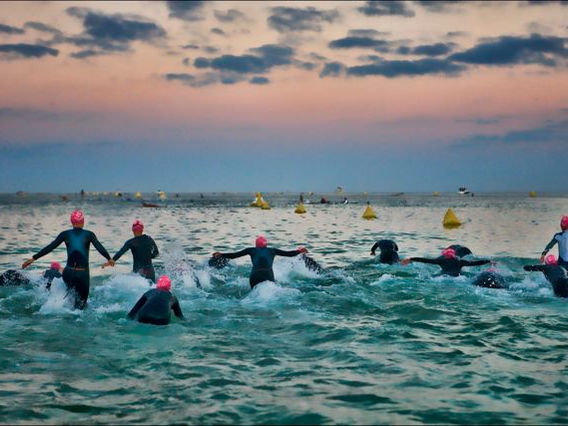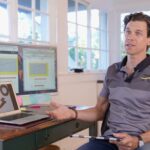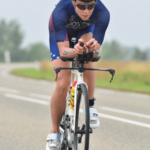Congratulations on taking the first step towards training for triathlons! Triathlon training can be a rewarding and challenging experience, and it’s important to approach it with a solid plan in place. Here are a few basic steps you can follow as you begin your triathlon journey:
-
Choose a triathlon distance: The first step in training for a triathlon is to choose the distance you want to race. Triathlons come in a range of distances, from short sprints to full Ironman events. Consider your fitness level, experience, and goals as you choose the distance that is right for you.
-
Get the necessary gear: Triathlon involves three different sports – swimming, biking, and running – so you’ll need to have the right gear for each discipline. This will include a swimsuit, goggles, and a swim cap for swimming; a bike, helmet, and cycling shoes for biking; running shoes and comfortable clothing for running. Get a heart rate monitor!
-
Find a coach and receive a training plan: There are many different training plans available for triathletes, and you can choose one that fits your needs and goals. Look for a tailored plan that is appropriate for your chosen distance and that takes into account your current fitness level. Avoid cookie cutter plans. They may work for some but not for everyone. Don’t waste your money & time. Find a supportive, caring and experienced coach, who knows what his talking about.
-
Build a strong foundation: Before you start focusing on specific triathlon training, it’s important to build a strong foundation of general fitness. This includes working on your endurance, strength, and flexibility, as well as developing good technique in each of the three disciplines.
-
Gradually increase your training volume: As you progress in your training, you’ll want to gradually increase the volume of your workouts. This will help you build the endurance and strength you need to complete your triathlon. A coach can help you with it.
-
Don’t forget to rest: Rest and recovery are an important part of any training plan. Be sure to schedule rest days and active recovery days into your schedule to give your body the time it needs to repair and rebuild.
A training diary can be a useful tool for tracking your progress and staying motivated as you prepare for your first triathlon.
Here is an example of what a basic training plan for a beginner triathlete who wants to complete a sprint triathlon (500m Swim 20km Bike 5k RUN) might look like:
Day 1:
- swim 600 meters (24 laps) in the pool
Day 2:
- Ride my bike for 15km
- Run 3km on a nearby track
Day 3:
- Swim 400 meters (16 laps)
Day 4:
- Run 6km
Day 5:
- Rest day
Day 6:
- Swam 20min in Lake
- Ride off for 15miles then
- Run off 10mins @ race effort
Day 7:
- Ride 25km
Of course, this is just one example, and your training plan will depend on your specific goals, and needs. You may want to include additional details, such as your heart rate, pace, and how you felt during each workout. You may also want to include any strength training or cross-training activities you do. The key is to find a format that works for you and helps you stay on track with your training.
As you advance to the next fitness level I recommend to purchase a powermeter for the bike. A powermeter is a device that measures the power output of a bicycle’s pedals. Powermeters are used by serious cyclists and triathletes to track their training and performance, and can provide valuable insights into things like power output, pedal stroke, and efficiency.
If you have any questions about triathlon training, please don’t hesitate to ask.
Happy Training!!



